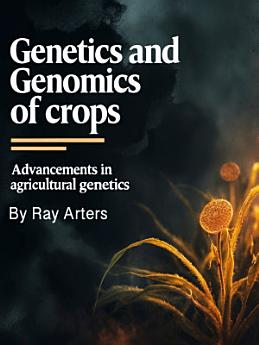Genetics and Genomics of Crops: Advancements in Agricultural Genetics
About this ebook
The domestication syndrome describes a suite of traits that distinguish crops from their wild ancestors, including synchronized ripening, reduced seed dispersal, increased seed size, and loss of seed dormancy. These traits emerged through both conscious and unconscious selection by early farmers who repeatedly chose plants with characteristics that made them easier to grow, harvest, and process. The genetic basis of domestication traits often involves relatively simple changes, sometimes single gene mutations, that have profound effects on plant phenotype and agricultural utility.
Wheat domestication exemplifies the complexity of crop evolution, involving multiple species and genomic events that created the polyploid wheat varieties we cultivate today. The evolution of bread wheat involved hybridization events between different grass species, followed by chromosome doubling that created stable polyploid genomes. These genomic changes not only enabled wheat cultivation in diverse environments but also provided the genetic redundancy that allows continued breeding improvements while maintaining essential functions.








